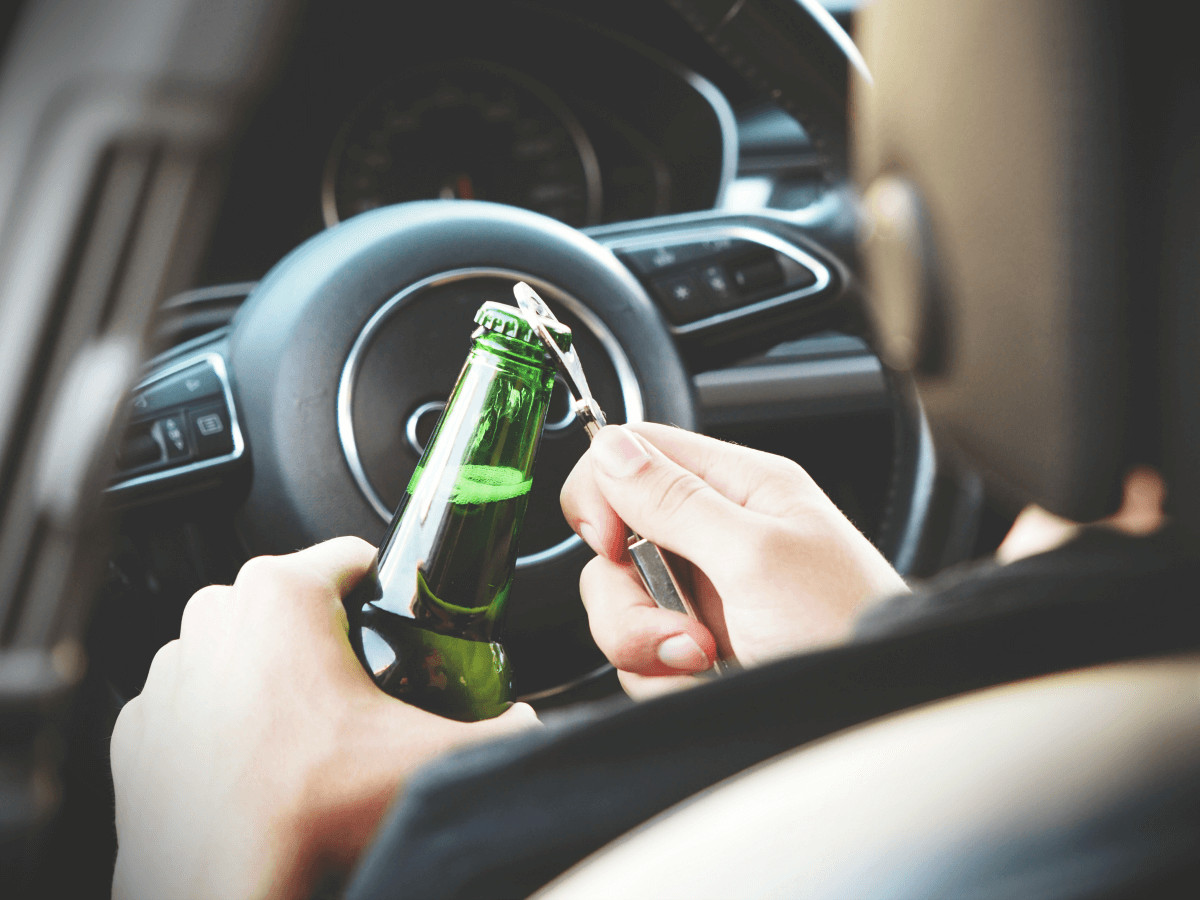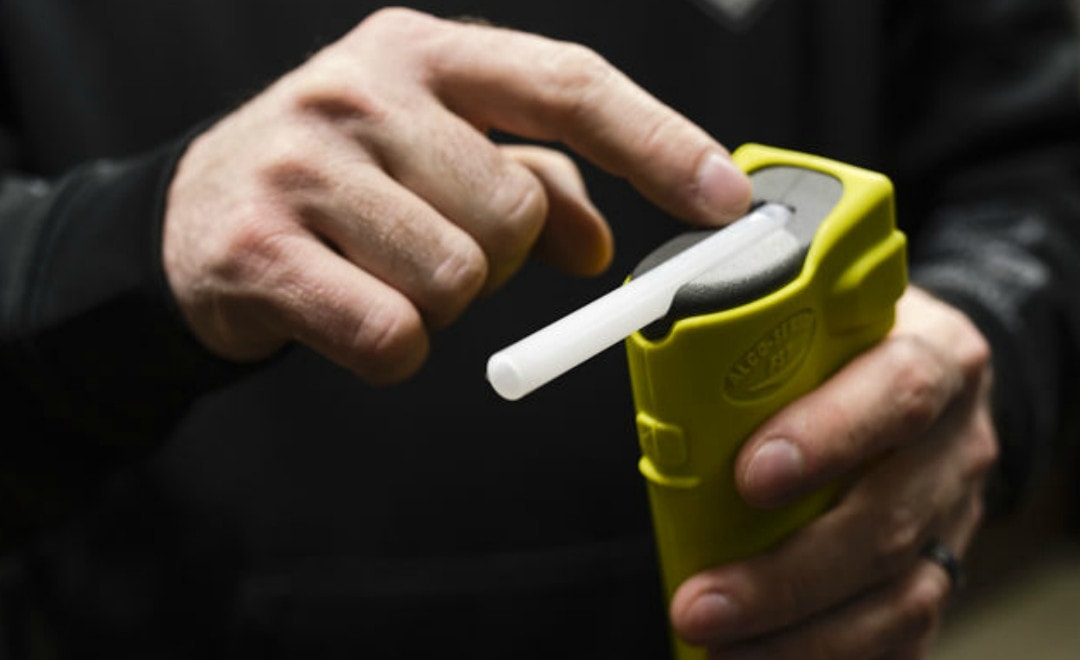Photo credit to Tyler Stewart and the publication News and Tribune
The most commonly used device during a DWI investigation is the alcohol screening test device or the portable breath test (PBT).
This device is a tool designed to give officers a tool to validate their decision to arrest a potential impaired driver. It is a hand held device that requires a sample of breath init a straw to determine the presence of alcohol in a person’s body.
Portable Breath Tests and North Carolina Law
North Carolina law does not allow any numeric value from a PBT to be used at trial. North Carolina General Statute 20-16.3 (d) specifically states that:
The fact that a driver showed a positive or negative result on an alcohol screening, but not the actual alcohol concentration result, or a driver’s refusal to submit may be used by a law enforcement officer, is admissible in court, or may also be used by an administrative agency in determine if there are reasonable grounds for believing that the driver has committed an implied-consent offense.
The bold language of the statute is critical.
Officers cannot use the numerical value of the PBT in determining whether to arrest a suspected impaired driver.
Using the Numerical Value
If it can be shown the officer did in fact use the numerical value in making the arrest, then the PBT should be suppressed. However, proving that the officer did in fact use the numerical value in making the arrest can be a herculean task.
When exactly was the PBT performed?
When trying to determine if the officer did in fact use the numerical value, the facts of each case are very important. Some facts to look out for include whether the PBT was performed immediately or towards the end of the investigation (the National Highway Traffic and Safety Administration states clearly in its training material related to DWI investigations that the PBT should only be performed after the any standardized field sobriety tests were conducted in order to validate an arrest decision).
Were other field sobriety tests administered?
Also check to see if any standard field sobriety tests were actually performed. Did the officer mention any other signs of impairment such as slurred speech, red glassy, eyes, or odor of alcohol? The lack of other evidence of impairment on a police report makes it more likely that the officer used the numerical value in making an arrest decision.

Challenging the Portable Breath Test Device In DWI Defense
While proving the officer used the PBT numerical value in making an arrest decision is quite difficult, there are also procedural grounds to challenge the PBT device in court. 10A North Carolina Administrative Code 41B .0502 provides guidelines for administering the PBT
1) The officer shall determine that the driver has removed all food, drink, tobacco products, chewing gum, and other substances and objects from the his mouth. Dental devices or oral jewelry need not be removed.
2) Unless the driver volunteers the information that he has consumed an alcoholic beverage within the previous 15 minutes, the officer shall administer a screening test as soon as feasible. If a test made without observing a waiting period results in an alcohol concentration reading of .08 or more, the officer shall wait five minutes and administer an additional test. If the results of the additional test show an alcohol concentration reading more than .02 under the first reading, the officer shall disregard the first reading.
3) The officer may request that the driver submit to one or more additional screening tests.
4) In administering any screening test, the officer shall use an alcohol screening test device approved under 10 NCAC 41B .0503 of this section in accordance with the operational instructions supplied by the Forensic Tests for Alcohol Branch and listed on the device.
The first question should be whether the office used the device correctly. Did the officer check to see if the driver has removed all food and drink from his mouth? Did the officer ask the driver if he had consumed alcohol within the last 15 minutes (to prevent mouth alcohol from disrupting the reading) and if so did the officer observe the waiting period?
A critical, but nuanced point is whether the officer performed just one PBT test. The statute mandates that if a reading over .08 is obtained that the officer must complete another PBT test. If any of the above steps are not correctly taken, the argument should be made for suppression of the PBT.

Was the PBT Properly Calibrated?
Another important question is whether the PBT is properly calibrated. 10A North Carolina Administrative Code 41B .0503 provides guidelines for proper calibration of the PBT:
b) the agency or operator shall verify instrument calibration of each alcohol screening test device at least once during each 30 day period of use. The verification shall be performed by employment of an alcoholic breath simulator using simulator solution in accordance with the rules in this Section or an ethanol gas canister.
c) Alcoholic breath simulators used exclusively to verify instrument calibration of alcohol screening test devices shall have the solution changed every 30 days or after 25 calibration tests, whichever occurs first.
d) Ethanol gas canisters used exclusively to verify instrument calibration of alcohol screening tests devices shall not be utilized beyond the expiration date on the canister.
e) Requirements of Paragraphs (b), (c), and (d) of this Rule shall be recorded on an alcoholic breath simulator log or an ethanol gas canister log designed by the Forensic Tests for Alcohol Branch and maintained by the user agency.
An often overlooked attack point of the PBT is the calibration requirements.
It is necessary for the PBT to be calibrated every 30 days.
The simulator’s solution itself must also be changed every 30 days or after 25 calibration tests, whichever occurs first. And all of this must be recorded in calibration logs. It is rare that an officer will have the calibration logs or even know the last time the PBT device was actually calibrated.
The language specifies these foundational requirements must be completed for the PBT device to be admissible evidence. If any one of these were not completed by the officer, then there is a great argument for suppression of the PBT.
DWI Defense: Attacking The Portable Breath Test In Trial
Every DWI case is its own creature.
The facts are very important in determining whether the officer actually used the numerical value in making the arrest decision.
The above mentioned statutes provide a great foundation for preparing to attack the admission of the portable breath test at trial so alway start by reading the relevant portions of the statutes.




























